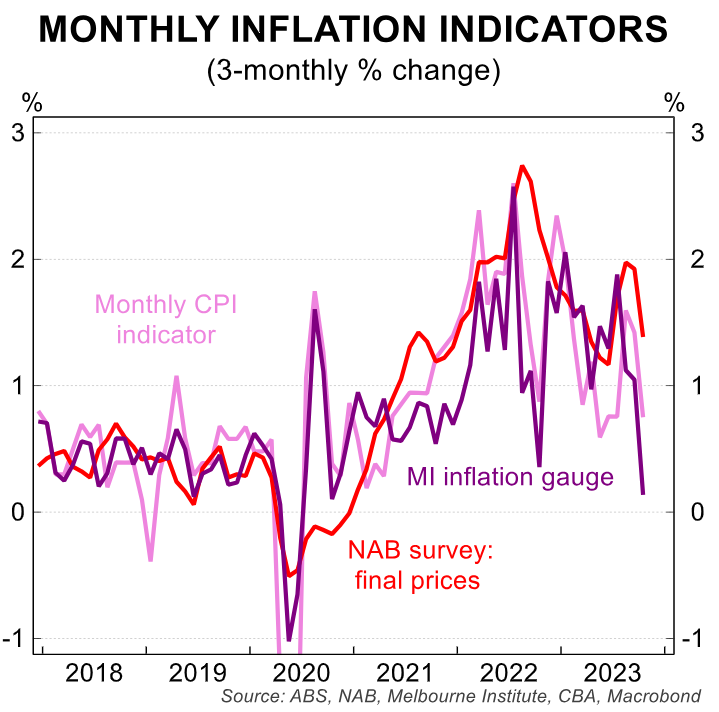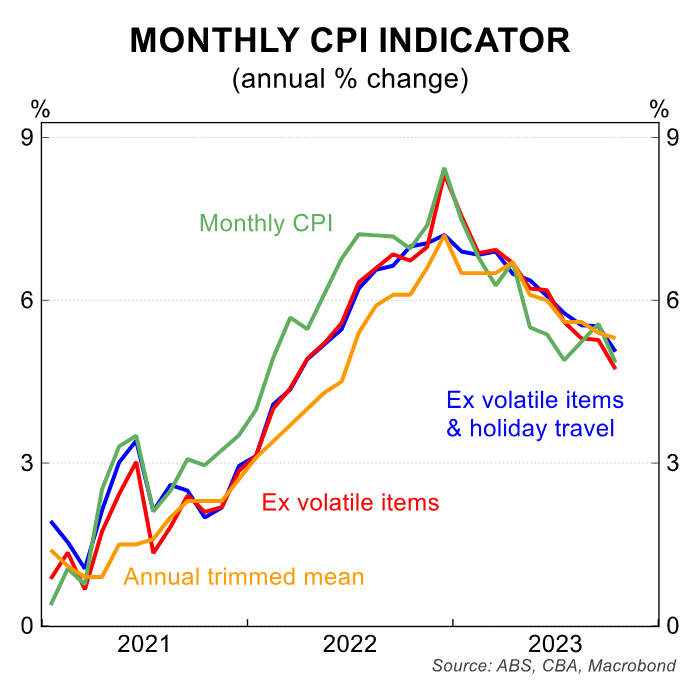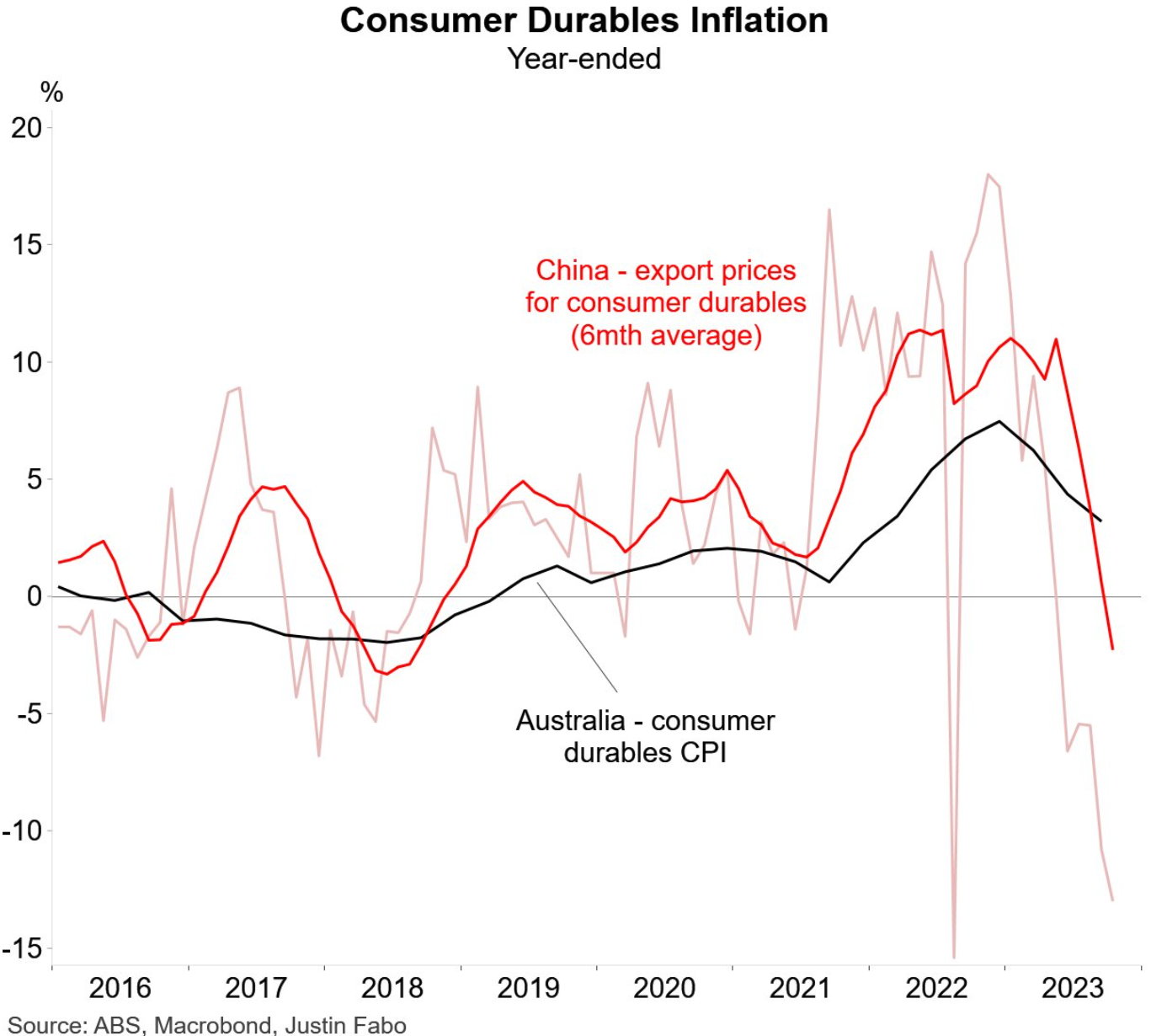Following the 0.4% fall in the ABS monthly inflation indicator for October, CBA economist Stephen Wu believes there is a good chance that Australia’s CPI inflation could fall below 4% by the end of this year.
Wu noted that the 0.4% fall in seasonally adjusted consumer prices was “the largest monthly decline in prices since September 2020”, and drove the annual rate to 4.9%, which was below market expectations and “is now back to its July 2023 rate”.

The result “was very much in line with the disinflationary signals from the various business surveys”, according to Wu, and now “outright price declines in consumer durables is a downside risk to the RBA’s inflation forecasts”.

“The RBA’s inflation profile bakes in flat prices for consumer durables; if prices reverse one-third of the increases since the pandemic, inflation would be ½ppt lower”, he noted.

“There will be further substantial easing in the annual rate of inflation over the rest of the year. There is a real chance that inflation prints with a 3-handle by December”.
“The very large increases of 0.9%/mth in November last year and 1.5%/mth in December last year will drop out of the annual rate calculations over the next two months”., Wu added.
“Assuming relatively large monthly increases over the rest of Q4 23 of around the 2022 average of 0.7%/mth (8.7% saar), we will still see annual inflation print below 4%(and below the cash rate)”.
Although “the quarterly CPI will show a higher figure because it captures the average over the quarter”.
CBA now “expect Q4 23 trimmed mean CPI to be 0.9%/qtr and 4.4%/yr. This is below the RBA’s expectations of ~1.0%/qtr”.
Nevertheless, Wednesday’s data “reduces the risk of an upside surprise to the Q4 23 CPI relative to the RBA’s inflation forecasts”, according to Wu.
As noted yesterday, more goods disinflation looks to be on the way to Australia, as illustrated by the next chart from Justin Fabo from Macquarie Group:

The supply chain issues that drove up goods inflation over the pandemic are easing, bringing prices back down.
This goods disinflation will make it easier for the RBA to meet its 2%-3% inflation target and will hopefully temper the need for further rate hikes.
It also supports the RBA’s claim that Australia’s inflationary pressures are “homegrown”.

